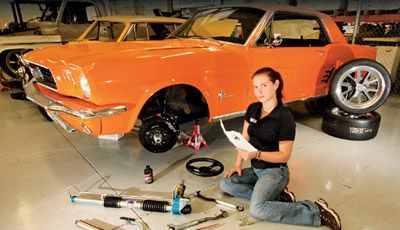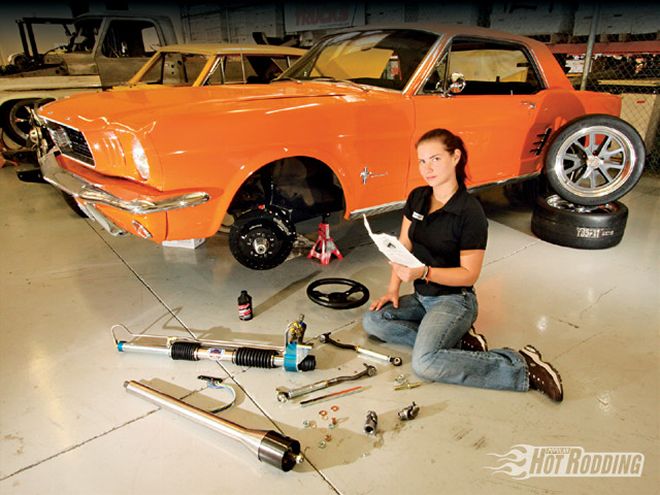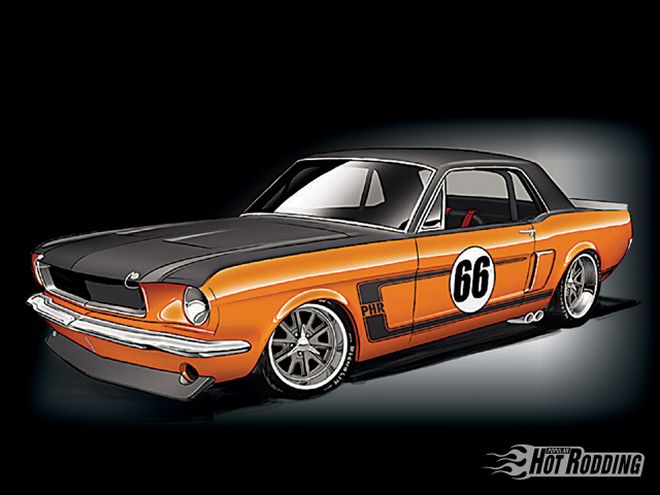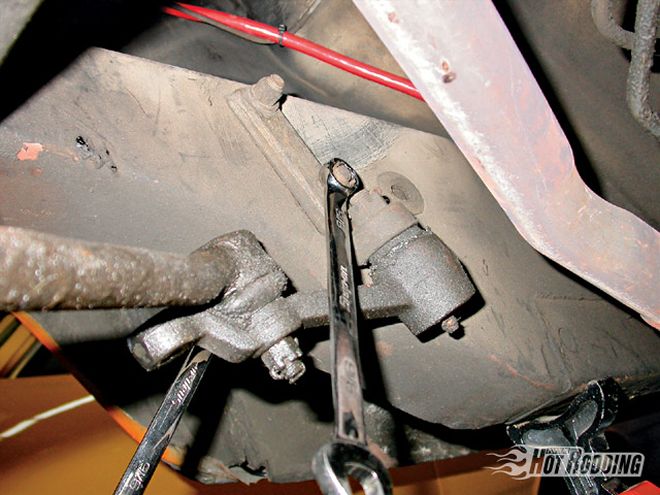

Street Fighter
We're swiftly moving our way through the front end of our 1966 Mustang, giving it the updates expected to make it perform. The vague steering feel was not going to fly on the street or at the track. It wasn't as wild in the lane as some 40-year-old steering systems are, but a couple new parts weren't going to cure it. Our choices were: do the best we could with a steering-box-style system by replacing all the worn joints, or start from scratch and do a rack-and-pinion conversion. We went with the rack.
Nearly all modern cars use rack-and-pinion steering because of its light weight and compact packaging. We like it because of its precision and superior road feel. The next question was whether to run a manual or power rack. Since ultimately this is a street car, and it would have some seriously sticky and wide meats on the front, power would be a whole lot easier for car show and city cruising.

To go along with the rest of our suspension, we chose Total Control Products' rack-and-pinion setup. Total Control Products is a division of Chris Alston's Chassisworks that specializes in making early Fords outperform late models. They have rack-and-pinion conversion kits for '60-65 Comets, '67-70 Cougars, '60-65 Falcons, '64-70 Mustangs, and '60-65 Rancheros. The rack itself is a direct bolt-in unit that requires zero cutting or welding to install. Instead of having the more traditional ends seen on late-model cars, this rack uses a center link that you can bolt onto the factory tie-rod ends. Because our Mustang was originally a six-cylinder, the tie-rod ends don't work with the V-8 spindles or the steering rack.
To remedy this problem, we used TCP's tie-rod ends and bumpsteer kit. Bumpsteer is a phenomenon where the wheels steer without input from the steering wheel. It's caused by incorrect steering geometry. TCP's bumpsteer kit allows you to shim the bolt connecting the tie-rod end to the spindle to give it the desired angle, which in most cases closely parallels the lower control arm. In order to make this adjustment correct, you need to have the camber, caster, and toe correct. We will be installing TCP's coilover conversion and tubular control arms at a later date, so the bumpsteer adjustment will have to wait.

These early Mustangs have an interesting way of putting their steering systems together. Unlike GM, the shaft is one with the steering box unless you disassemble it. To adapt the new rack, we replaced this assembly with a stainless steel tilt-wheel column from Flaming River. The new column bolts in the same way the old one did, but with an updated firewall mount and GM-style wiring. Our Mustang's wiring harness is a mess of shorts, so building a connector to fit the new column would be a waste of time. All the pins and the diagram were supplied with the kit, which will make it really easy when the time for new wiring comes.
The last piece to complete the steering chain of command is the steering wheel itself. We got Grant's Formula GT wheel for its simple race-inspired styling. It's also a couple inches smaller in diameter than stock at 13 inches, so it makes quick steering input a lot easier. No more twirling a 17-inch steering wheel around four times to get into the next lane!
When we pulled this Mustang into the shop, it was a sad and tired stocker without a purpose. Each improvement we've done on this car is bringing it one step closer to being a pavement-hungry supercar.
WHERE THE MONEY WENT Part: Source: Part number: Cost: Rack-and-pinion kit (with column) TCP RCKPA126 $2,644 Bumpsteer kit TCP TIER-14 $269 Formula GT 13-inch wheel Grant 773 $82 Steering wheel installation kit Grant 3196 $17 Total $3,012